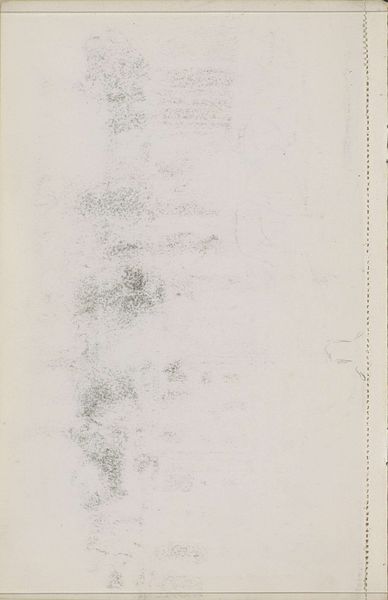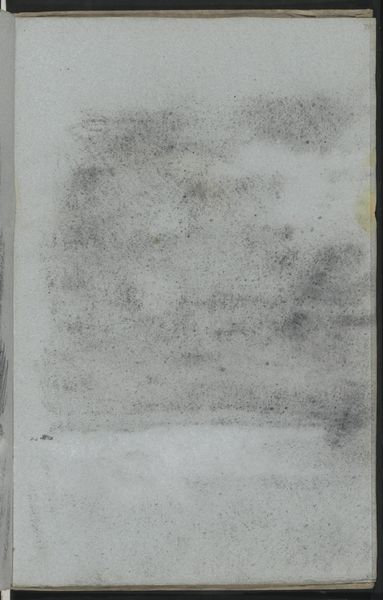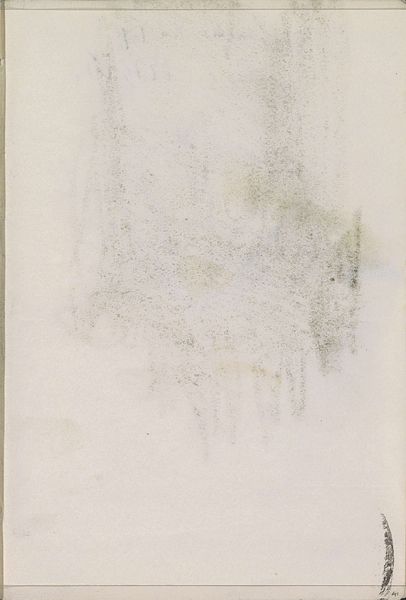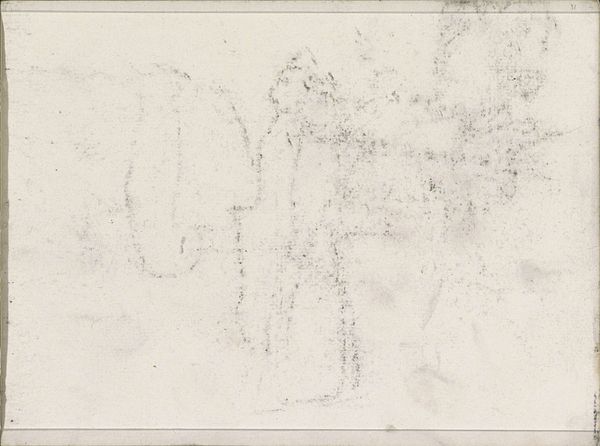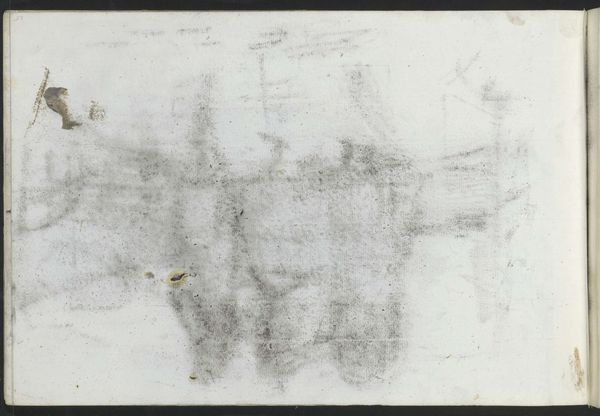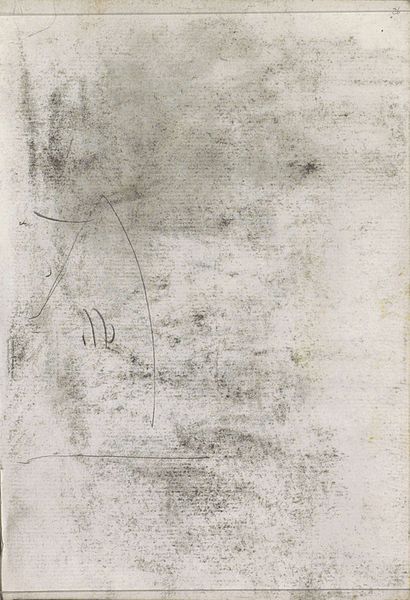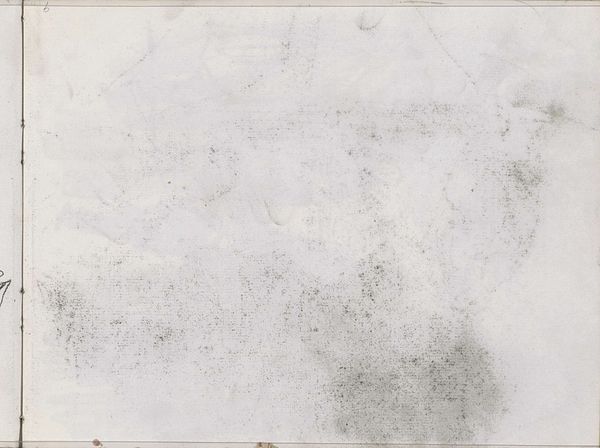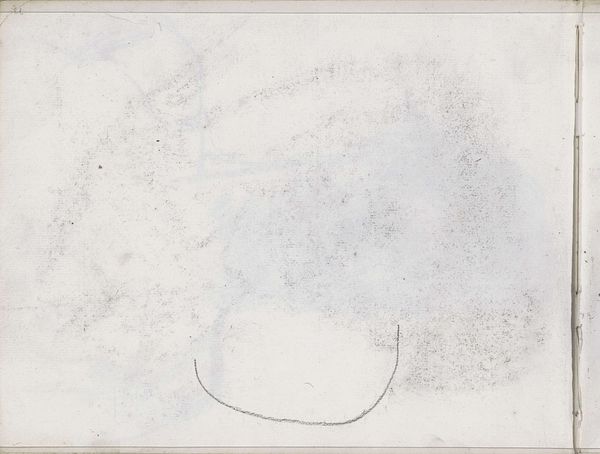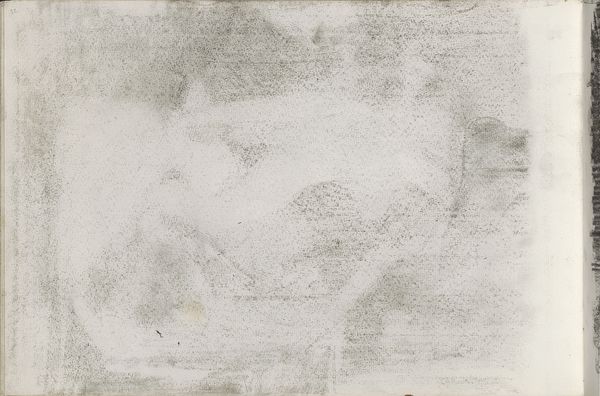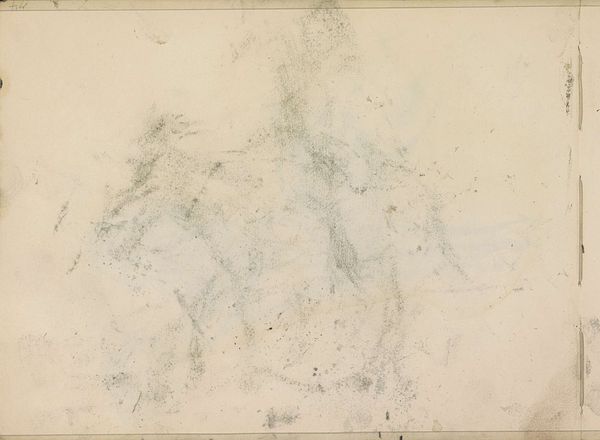
drawing, paper, graphite
#
drawing
#
paper
#
abstraction
#
graphite
#
watercolor
#
monochrome
Copyright: Rijks Museum: Open Domain
Curator: This artwork here at the Rijksmuseum is titled "Abklatsch van de krijttekening op blad 18 recto", which translates to "Blot of the chalk drawing on page 18 recto". It's an intriguing graphite drawing on paper by Isaac Israels, created sometime between 1875 and 1934. Editor: My first thought is ghostly remnants. It’s ephemeral, almost like seeing shadows on a wall rather than a fully formed composition. There’s a softness that draws you in despite its apparent simplicity. Curator: Indeed. Israels, emerging from the Hague School, found himself captivated by capturing fleeting moments and ordinary life, particularly through unconventional techniques. This particular work speaks to his experimental nature, perhaps investigating the accidental marks and impressions left behind by a previous drawing. Think about how artists during this time also captured movements and blurred outlines on paper, reflecting changing political ideas where everything felt impermanent. Editor: I find that exploration of accident and the residue of process very relevant. It’s a challenge to the idea of the artist as the sole originator, pushing towards a collaborative effort between intention and chance. Considering that its time frame coincides with shifts in gender roles and sociopolitical ideologies, are there echoes of uncertainty and erased identities embedded within these faint traces? What message does this give to viewers who study intersectionality? Curator: That's a sharp perspective. There are a multitude of considerations at play, including Israels’s connections to literary and artistic circles in Amsterdam, but let's acknowledge its impact within art’s democratization by the turn of the century. How art itself was produced and disseminated opened dialogue concerning hierarchies and biases inside academic art and its traditions. This abstract method aligns to accessibility for individuals seeking creative means. Editor: Right, it certainly reframes how we view 'finish' in art, and what it means to have a complete artistic statement. It brings forward critical discussions concerning access to cultural narratives, enabling diverse interpretation from wider audiences previously excluded due rigid methodologies. This has encouraged art’s presence beyond elites. Curator: Exactly. This "blot" opens questions around originality, the artistic process, and who gets to define aesthetic value. A very thoughtful work. Editor: And that’s precisely why these types of "incomplete" or "accidental" images provoke deep questions about society itself. They provide means by which all people have possibility, through interpretation, for influence within our societal narratives.
Comments
No comments
Be the first to comment and join the conversation on the ultimate creative platform.

